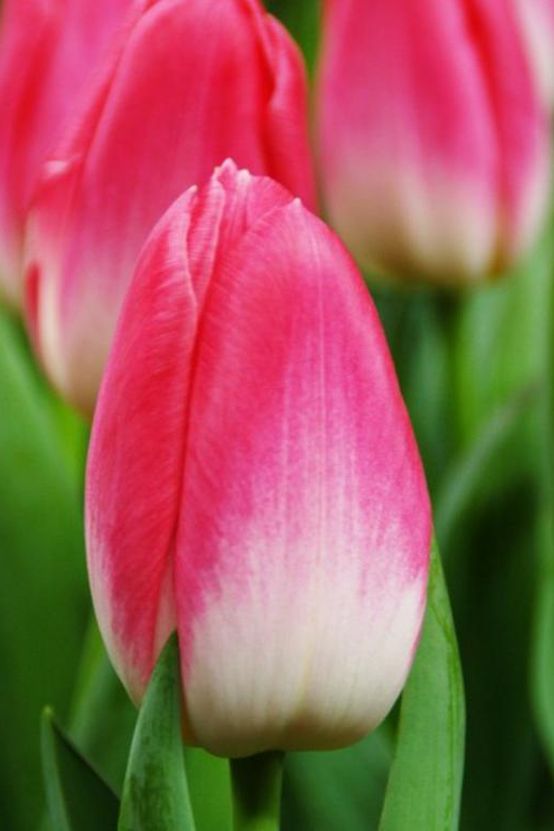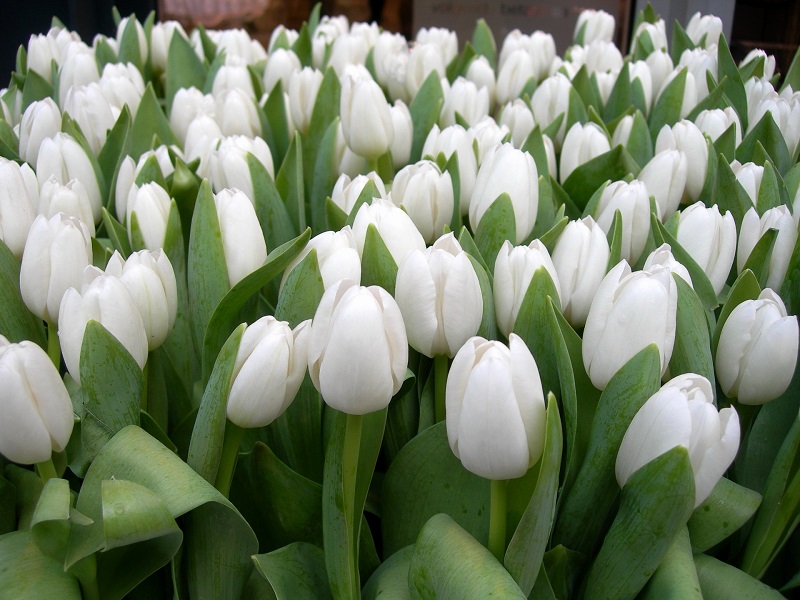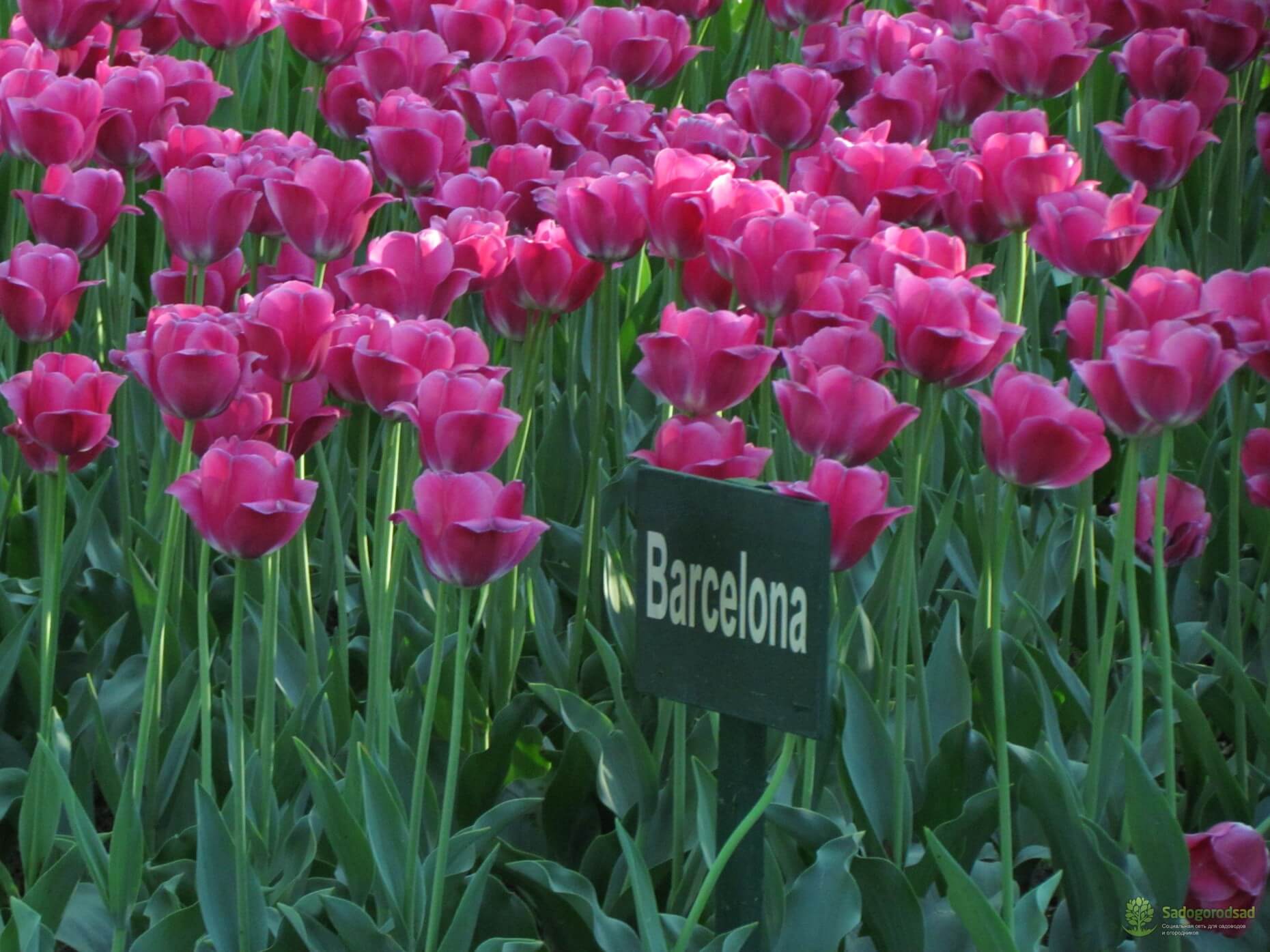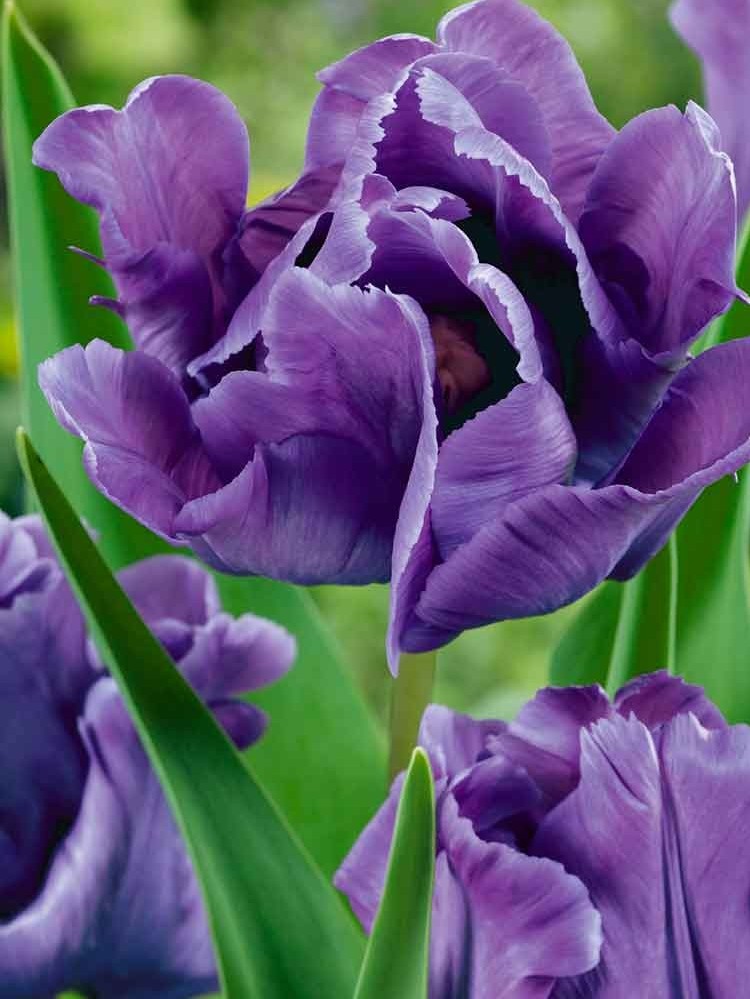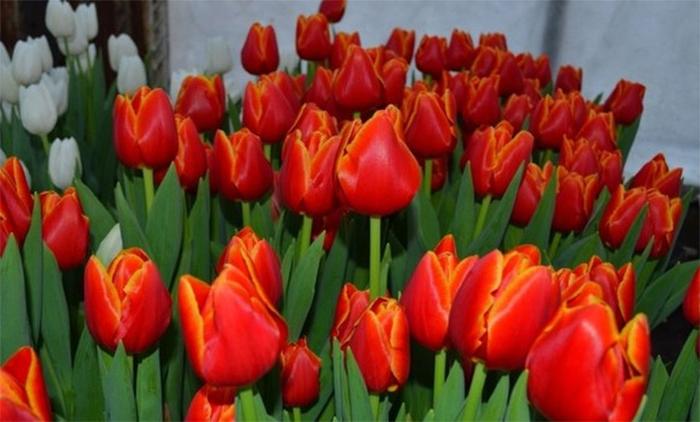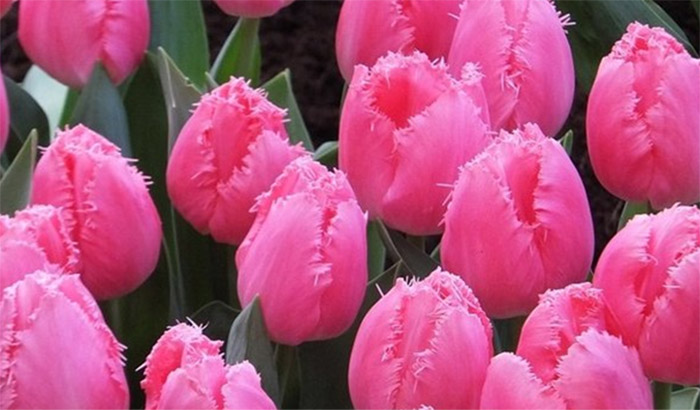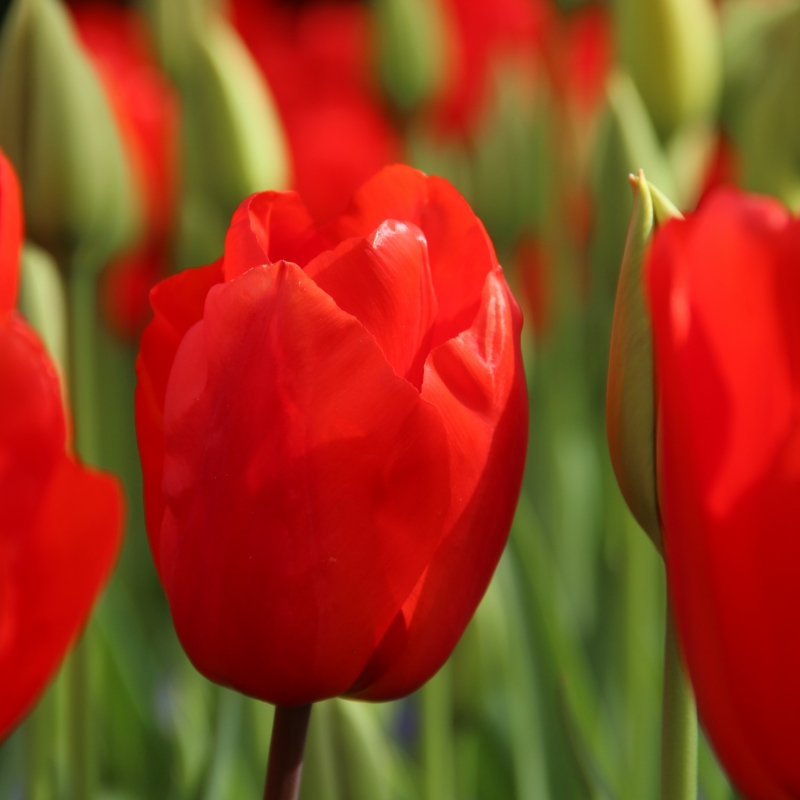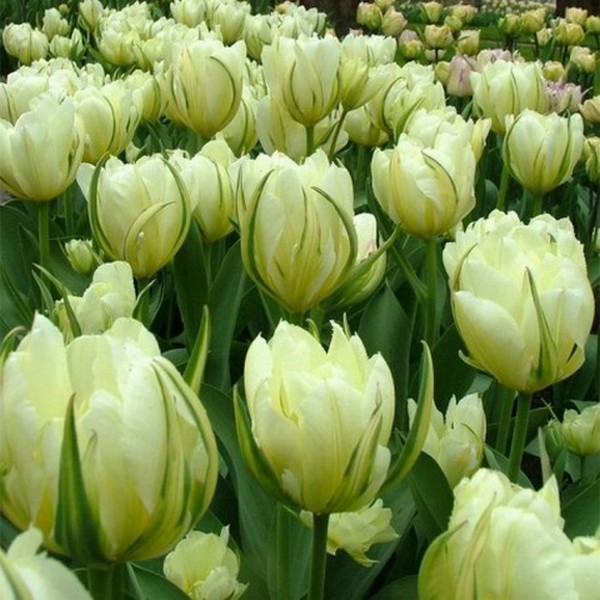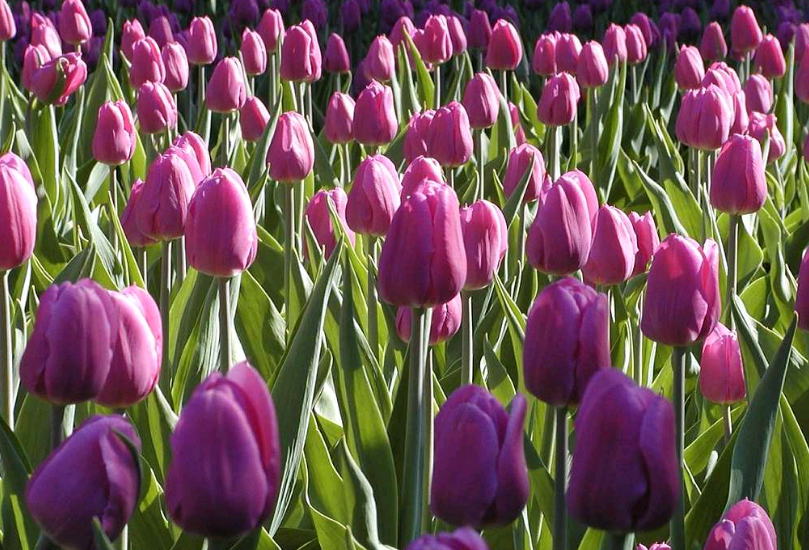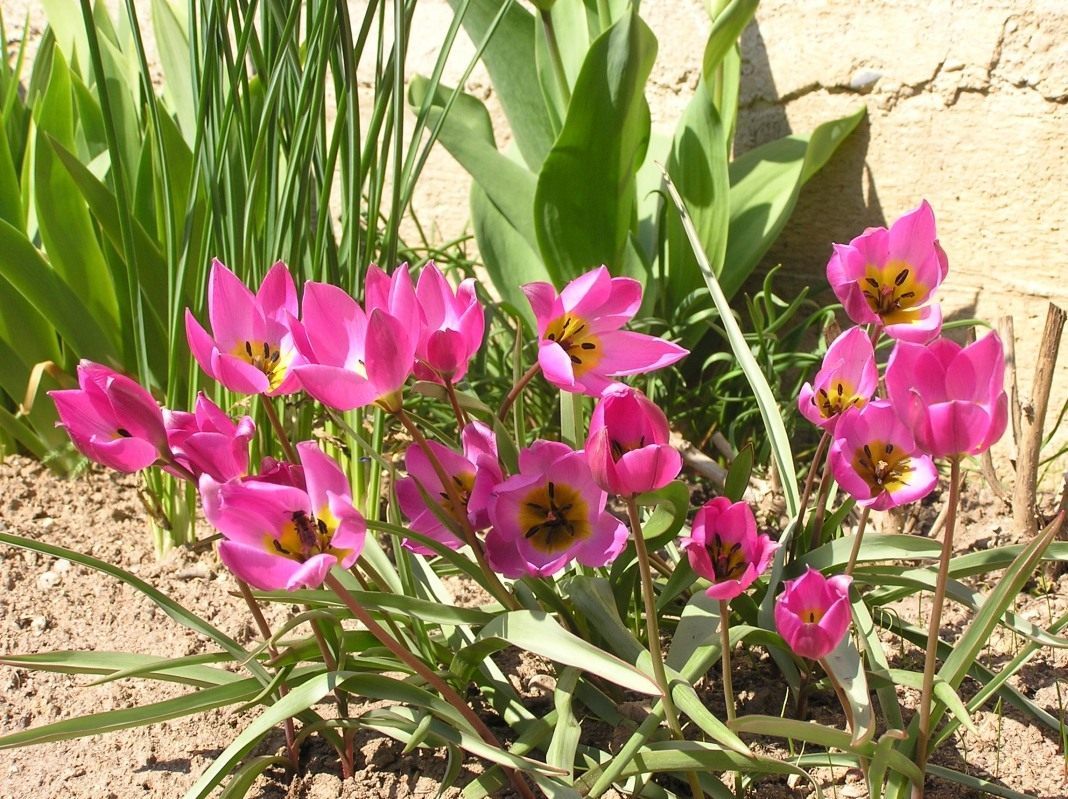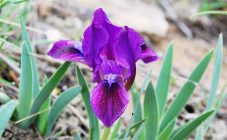Content:
Tulips first came to Europe from Turkey in the 16th century. The flower bulbs were donated to the Austrian ambassador by the Turkish Sultan. They began to breed very actively after 100 years in Holland. This country is still the world leader in the export of tulips. Russian flower growers were fascinated by this plant much later - in the XX century. Today tulips are among the first to announce the arrival of spring and give people a good mood.
The most popular tulip varieties: TOP-10
This bulbous culture has a large selection variety. The buds amaze with their exquisite and amazing shape, and the color has an unusually wide palette, ranging from delicate pastel shades to catchy and bright colors.
According to the accepted botanical classification, the entire group of plants is divided into: early flowering, medium flowering, late flowering and botanical (wild) varieties. Inflorescences can be simple, double, fringed, lily-colored.
Among the varieties popular today, very attractive varieties can be noted.
Tulip Dynasty
A Dutch variety with simple goblet-shaped inflorescences. After opening, the bud resembles a lily. At the base, the color of the petals is snow-white, then it smoothly turns into pink. The variety belongs to the Triumph group, which is characterized by large sizes of leaves, stems and buds. The maximum plant height is 60 cm. The pink giant is perfect for decorating flower beds and ideal for making chic bouquets. The variety is not picky about care.
Tulip Royal Virgin
Another variety of the Triumph group. It has a snow-white goblet bud measuring 10 cm. Plant height up to 45 cm. The tulip has an average growth rate. Can be used for landscaping and cutting. It tolerates partial shade well. Harmoniously combined in a flower bed with any other flowers. It shows its magnificence in planting in a group of 15 pieces.
Tulip Barcelona
Delicate flower with purple-pink petals of Dutch selection. One of the most popular representatives of the Triumph group due to its long flowering period and attractive flower color. The buds of these tulips are dense, goblet-shaped, of medium size (7 cm). The variety has a sweetish aroma. In the middle lane, it blooms closer to mid-May. Looks very nice in plantings next to white daffodils. Perfect for arranging bouquets.
Tulip Blue Parrot
Plants are classified as parrot tulips. Requires planting in full sun or partial shade. The flower grows to a height of 50 cm. Blue Parrot is suitable for both flower beds and cutting. The variety has spectacular blue buds with a purple tint. Flower shape - cupped, size - 8-10 cm. Ruffled petals. Has an average growth rate.
Tulip Verandi
Spectacular Dutch variety, a favorite of florists. The bud has a graceful goblet shape 10 cm high, the flower itself grows up to 55 cm. From afar it attracts attention with scarlet petals with a yellow border and a silky texture. The flowers give off a delicate aroma. The variety belongs to the Triumph group, like its other representatives, opens the buds gradually and only half, remaining in this state for up to 7 days.Over time, the petals do not lose their brightness. Verandi is suitable for making a mono bouquet and goes well with white, blue and yellow flowers.
Tulip Casharel
The cultivar belongs to the fringed variety of tulips, which are characterized by a needle-like fringe along the edge of the petals. Plant height ranges from 40 to 60 cm. The size of the glass is 7 cm high. It blooms in late April or early May. The color of the petals is deep pink. The shape of the glass is classic. Casharel grows well in sunny, wind-protected places, does not tolerate stagnant moisture. Has a universal purpose.
Lalibela tulip
Darwin hybrid of Dutch selection, bred relatively recently by crossing cultivated and wild specimens. It is distinguished by a large goblet bud 11 cm high. The height of the plant itself can reach 80 cm. It blooms in early April and pleases the eye until May. The color of the petals is uniform, bright red. Needs protection from the scorching sun rays, requires moisture. Unfortunately, the bouquet does not last long.
Tulip Exotic Emperor
Terry variety, belonging to the group of tulips "double effect". The bud is peony-shaped. This flower can be called a real giant, the diameter of its glass when opened is up to 20 cm. Perfect for landscaping the site and for forcing for cutting. The height of the whole plant is from 30 to 50 cm. The petals have watercolor strokes of yellow and green on a white background. Blooms in late April.
Tulip Strong Gold
Dutch variety belonging to the Triumph group. Its flower resembles a bright sun in its shade. It goes well with other flowers both in a flower bed and in a bouquet. The tulip is unpretentious in care, it multiplies easily. The height of the whole plant is up to 60 cm, and the glass is 8-9 cm. Flowering in the flowerbed occurs in late April or early May and lasts quite a long time. Prefers a sunny place or partial shade for growing.
Tulip Negrita
A plant of the Triumph group with very rich purple flowers with a white base. This tulip, native to Holland, reaches a height of 40-50 cm. The variety is suitable for forcing, including winter. The glass has a simple classic shape. Prefers growing in light shade, tolerates the vagaries of the weather well. In the flowerbed, it is harmoniously combined with adonis, black hellebore and daffodils.
Features of agricultural technology by varieties
The Triumph tulip group is a medium-flowering species. Over the course of 100 years, these flowers have gained particular popularity due to their unpretentiousness. The homeland of tulips of this class is the Netherlands. In general, the culture is characterized as cold-resistant, sun-loving, requiring moderate watering and fertile soil. The group has rather large flowers, which are slightly smaller than Darwin's ones. In addition to the varieties of this subspecies listed in the TOP, other varieties are also known:
- tulip Leen van der mark;
- tulip Denmark;
- tulip Fleming flag;
- tulip Circuit;
- tulip Dow Jones;
- tulip Gavotte;
- tulip Tom pouce;
- tulip purple flag;
- tulip Happy Generation (Happy generation);
- tulip Match.
Care for this tulip group is standard. To obtain lush flowering, the bulbs should be planted in light, organic-rich soil with a neutral acidity index. The bulbs should be dug up annually at the end of June and planted in the fall.
Lily tulips are a small class of ornamental plants with a variety of colors. What unites them is that the blossoming buds become like lilies. This group includes both large and small tulips. Representatives known in our country are:
- tulip Ballad;
- Ballerina;
- Holland chic.
The parrot tulip group is distinguished by its ruffled exotic flowers. The color of the petals can be red, white, pink, purple, blue, yellow. In Russia, the following varieties of this subspecies are best known:
- tulip Black Parrot;
- Epricot Parrott.
A sunny area with drained fertile soil is suitable for them. The planting site should be protected from wind, which easily damages large flowers. During the growing season, timely watering is very important for these plants, while water should not get on the stems, flowers and leaves. After flowering, the bulbs are dug up and re-planted in the fall.
Botanical tulips are often called dwarf tulips, since the subspecies is not very tall. The class combines wild varieties of various shapes and colors. These are the earliest tulips. Among them are the varieties:
- Little beauty;
- tulip Tarda Dasistemon.
Spectacular representatives of the group are Foster tulips, for example, the famous tulip of the Foster Ving variety. In arid climates, flower bulbs do not need to be dug for several years. During this period, they grow and turn into a profusely blooming clump.
Darwin's hybrids are characterized by special vitality and bright colors. These are large plants up to 75 cm high with huge glasses. In the sun, the flowers open up and become like saucers with a dark bottom. The subspecies is great for cutting and becomes a decoration for any flower garden. Darwinian hybrids known in Russia:
- tulip Pink impression;
- tulip Banja luka;
- tulip parade;
- tulip Golden parade;
- tulip Olliules.
Plants tolerate both sun and partial shade equally well. When the first shoot appears, it is imperative to introduce top dressing so that large and bright buds are formed. After cutting, the leaves are left in the flowerbed to nourish the bulb. Varieties of this group are considered unpretentious to care for.
Peony tulips are not a new species, but which gained their fame back in the 17th century. However, these flowers are still popular today. Tulips got their name for their resemblance to peonies, having a multi-layer double structure of the flower. At the same time, plants can be completely different in size, color, flowering time. An interesting representative of this group is the Belicia tulip with a large number of delicate creamy petals with pink strokes and edging along the edge. Plants require a sunny area with protection from the wind and fertile soil. There should not be a close occurrence of groundwater and excess moisture in the ground, otherwise the bulbs will rot.
For late tulips, it is better to provide for planting in partial shade. In this case, their flowering period will be much longer. This group includes many exotic species whose beauty defies description. Among the interesting varieties of late flowering, the following can be noted:
- tulip Queen of Knight;
- tulip Finola;
- tulip Carnival de Nuys.
While most spring-flowering bulbous plants have already shed their petals, late tulips continue to delight with their bright colors and graceful shape. Their agricultural technology is not much different from the cultivation of fellows, except that the timing of planting the bulb is shifted to a later time.
Variety of choice
It is impossible to imagine a spring garden without tulips. You can plant these plants in various places on the site. For example, low-growing wild species will perfectly decorate a rocky hill, and in combination with other plants can be used in border planting.
To make the garden always beautiful, it is better to plant several varieties of tulips at the same time with different flowering periods. Among the thousands of varieties, there are sure to be those that you want to plant and grow. If any view disappoints, you can always experiment with planting new tulips. The varieties described above can be used as a cheat sheet to know which, when and where to plant.

